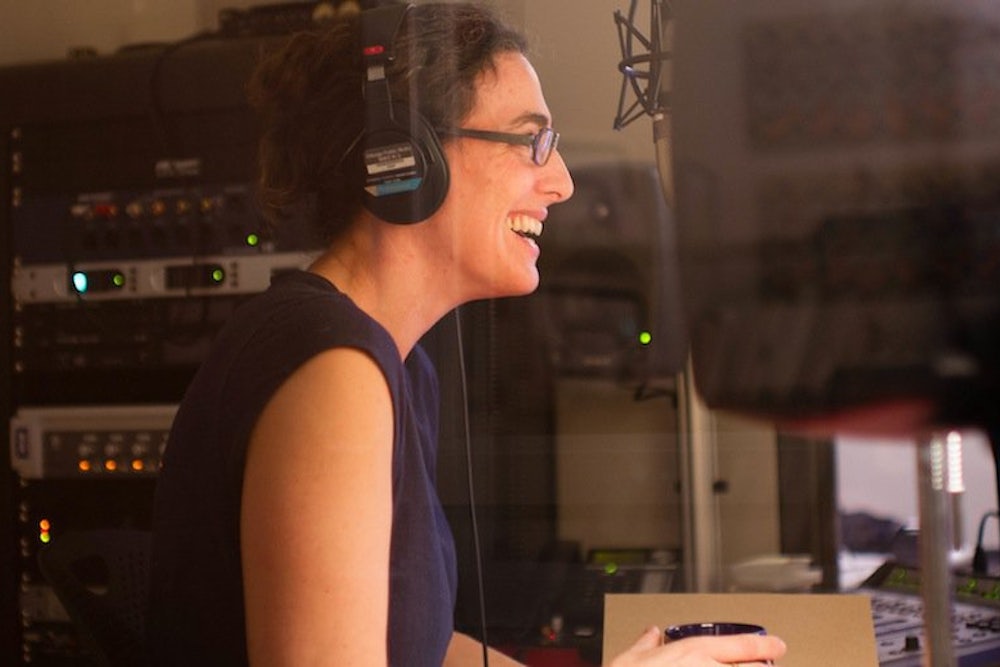This morning, Sarah Koenig released the twelfth and final episode of “Serial.” Its title is “What We Know,” but—spoiler alert—we still don’t know whether Adnan Syed really killed Hae Min Lee in 1999. The show dangles the possibility that at some future point a new DNA test will reveal crucial information. But for now, after three months of listening, we really don’t know that much more than we learned in the series’ first episode.
It is a frustrating, but in some ways fitting, end for the podcast’s first season. After all, Koenig claimed to be reporting the story in real time. In interviews after Serial had started, she insisted she did not know the ending, that she did not even know what the following week’s show would bring. Her uncertainty was part of what made the show feel so fresh. In October, following episode five, Slate’s Hanna Rosin wrote a piece called “The Real Secret of Serial.” It was subtitled “Has Sarah Koenig made up her mind yet?” Koenig’s evolving knowledge and her uncertainty as to Syed’s guilt was part of her strength as a narrator. She learned and felt with her listeners, rather than explaining to them.
But her ignorance was, in many ways, a performance. In the very first episode, Koenig said she’d been fascinated with the case already for a year. Her investigations each week were too complex, and the production value of the show too high, for her to literally have been starting from scratch every seven days. And yet Koenig and the show insisted that she was reporting in real time, which implied each show was scraped together on the fly to showcase that week’s work. I got a version of this in an email response I received from the show’s producers after I asked if I might be able to listen to the show early for a review I was writing. “Unfortunately, our production timeline is such that we can't provide advance copies to any press.”
To listeners, the extent of Koenig's knowledge was sketchy at best, and that was part of the magic of earlier episodes. The first four were riveting. But if Koenig's relationship to the story fascinated listeners at first, it eventually weighed the show down. With little new information each week, the onus was on Koenig to prove she’d at least tried her best to find some. In episode seven, Koenig meets with a lawyer from the University of Virginia’s Innocence Project Clinic, and the episode feels like a long and lightly edited conversation between two people who are obsessed with the same thing. From there, the episodes don’t improve much. One of the season’s worst episodes was the tenth, “The Best Defense Is A Good Defense.” It focuses almost exclusively on M. Christina Gutierrez, the defense lawyer who was disbarred a year after representing Syed. Another weak moment in the show came in episode eleven, which featured a protracted investigation into whether Syed ever stole from his mosque’s collection box.
The commitment to twelve serialized episodes reported in real time went from being the show’s hook to seeming like an enormous constraint. There was so much airtime to fill and it seemed Koenig used all of her good leads early on—the rest were dead ends. As this construct began to weigh the show down, it became a target for jokes and parodies. One in particular is worth highlighting: Funny or Die’s video “The Last Episode of Serial,” released Tuesday. In the video, the Koenig character runs around her studio frantically trying to close the case in time for the episode, searching on Best Buy’s website for “payphone,” texting the state’s witness in the case, and calling Syed. When her character starts the final episode saying, “Maybe we’ll never know who killed Hae Min Lee,” her producer and Mail Chimp’s executives look horrified. So she delves back into the details for an answer. At one point in the monologue, she addresses the question of the show’s format head on: “What if it was 40 episodes? What if it was 90?” The question doesn't just pinpoint how arbitrary the number is; it also treats the question of Serial's length as though it is as important as the actual evidence in the case.
Which is fair, because the structure of the show ended up shaping the story as much as any of the actual evidence did. Had Koenig known going in that no amount of investigation would yield any certainty, then more of the show—perhaps all of it—would have ended up on the cutting room floor. At the beginning of the final episode, before explaining that the show won’t come to a definitive answer, Koenig confesses that she’s still asking Syed the basics. She samples a conversation she had with him this past Saturday night, calling it “down to the wire.” The Funny or Die parody, it turns out, wasn’t far from reality.
And yet, a different moment in the parody stands out as particularly truthful. At the end of the montage, Koenig’s character loses her temper. “What do you want?” she demands, “I do a podcast. It was supposed to be for four people!” The joke is that she had no idea how big this thing would get. In all seriousness, perhaps if she had, she and her team wouldn’t have gone in with so many unknowns, and a production schedule that demanded more material than they ended up with. But if the Serial team hadn’t gone this route, Serial might not have worked so well when it did work. Koenig’s investigation was, at best and particularly in the beginning, the show's finest feature. So what’s the answer? Seems, of course, that there isn’t one.
